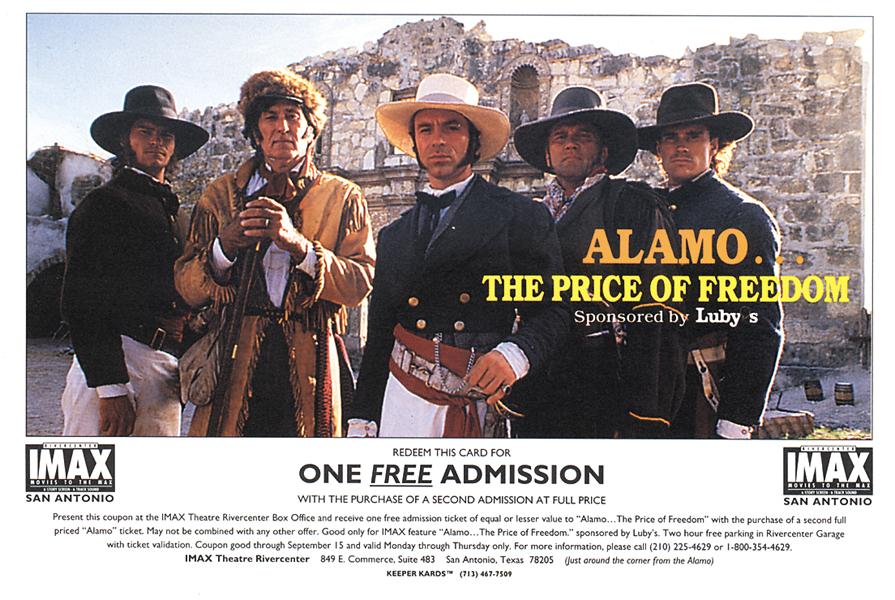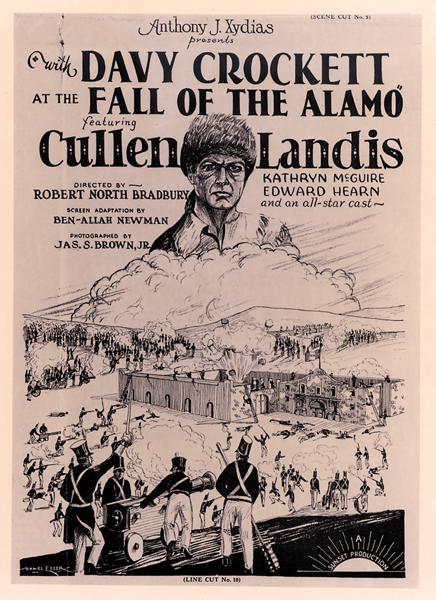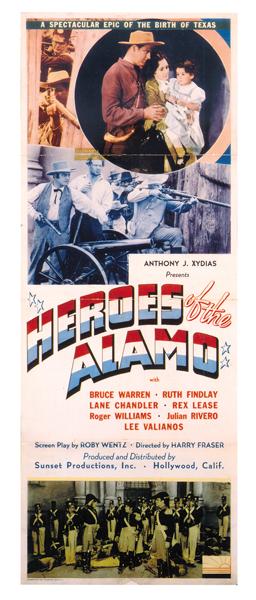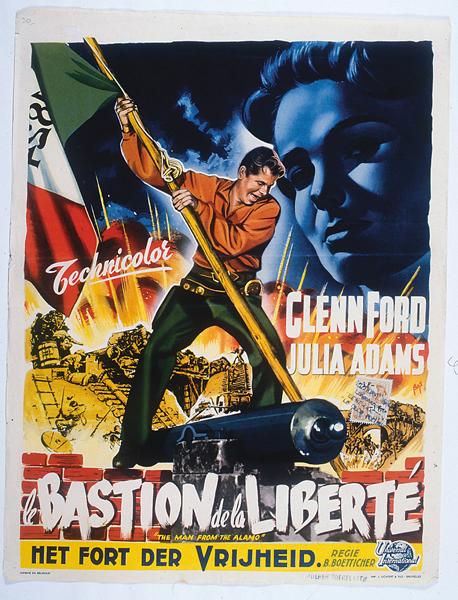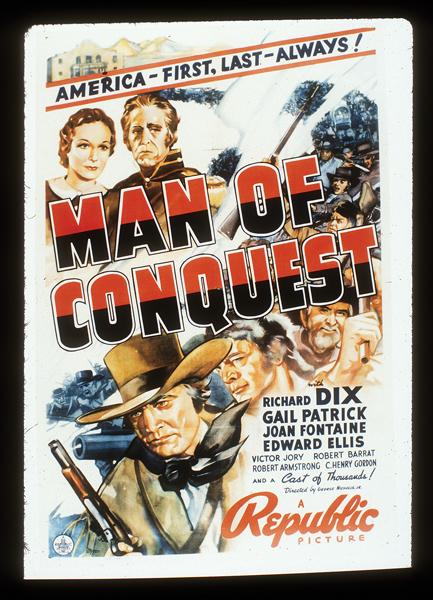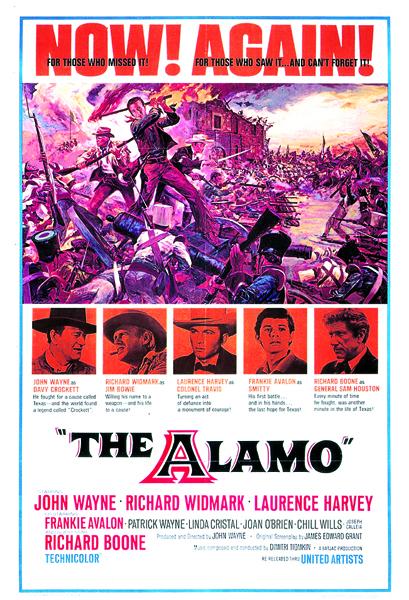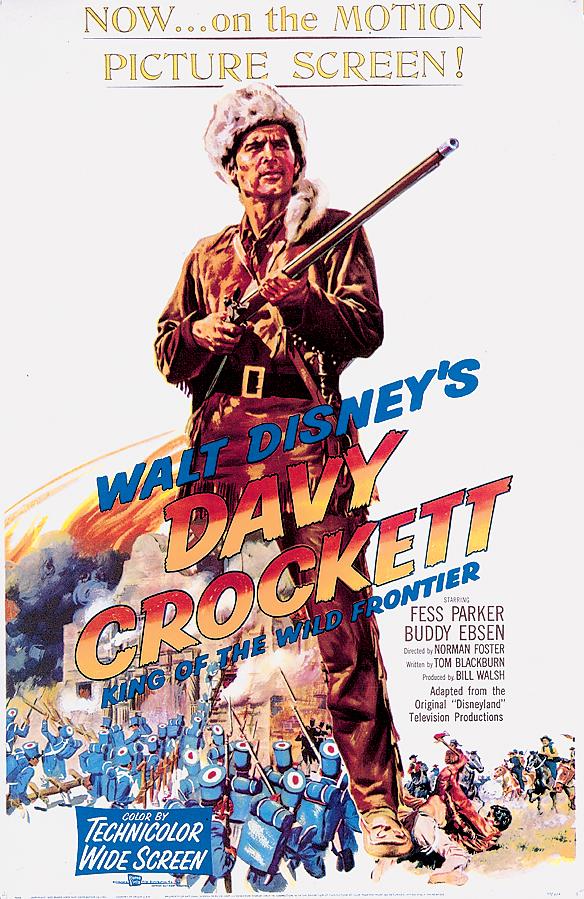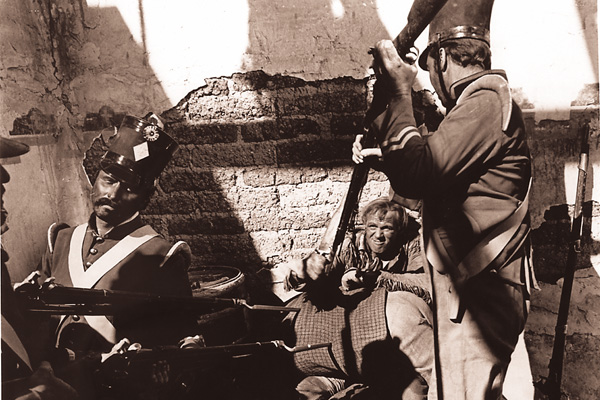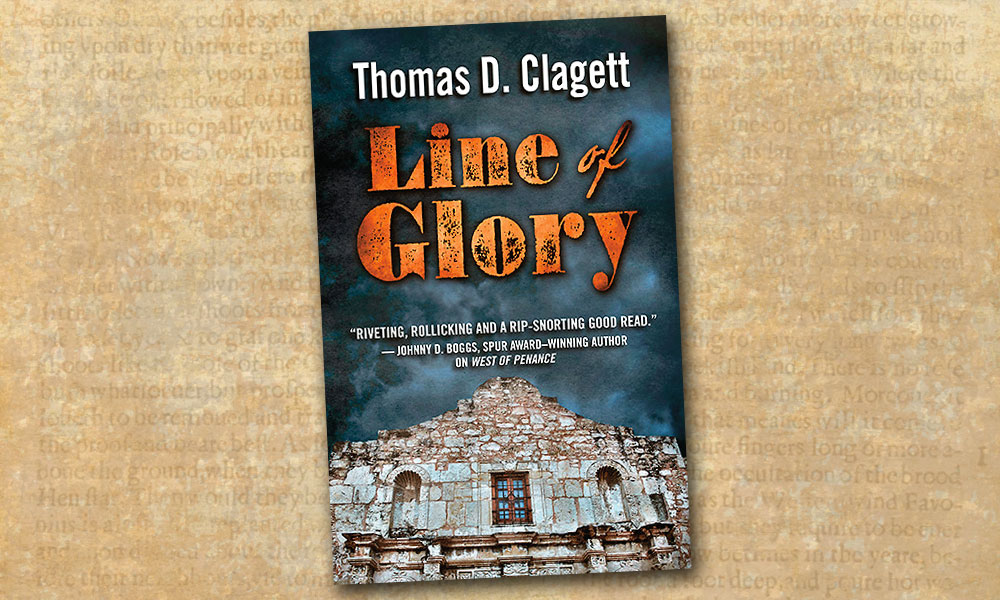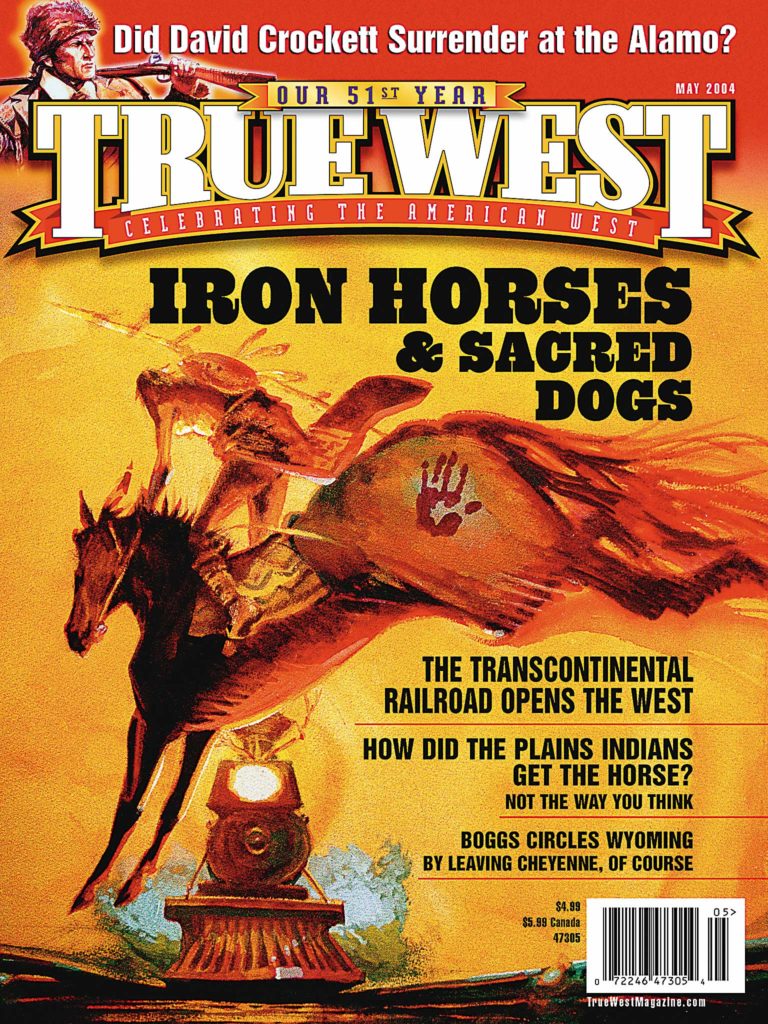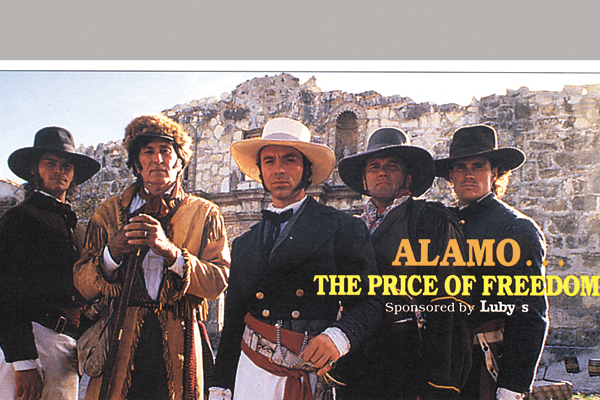 This April, Touchstone Pictures (a subsidiary of Disney) released a $75 million-plus film The Alamo, which reinterpreted this most famous of frontier battles.
This April, Touchstone Pictures (a subsidiary of Disney) released a $75 million-plus film The Alamo, which reinterpreted this most famous of frontier battles.
Disney initiated the first great Alamo craze in 1954 with its TV and movie portrayals of Davy Crockett, but it remains to be seen if lightning can strike twice for the house that Walt built. Even the most ambitious Alamo film to date, John Wayne’s 1960 The Alamo, was a critical and financial flop.
The Alamo has proven a difficult story for filmmakers to tell, and for obvious reasons—you trap your heroes in a fort for 12 days without much happening, save long conversations on patriotism, and then kill them off in an ending that everybody knows is coming. Still, that has not stopped Hollywood from retelling the tale from a variety of angles. The following pictorial offers a survey of Alamo movies during the last century. If you want to know more, pick up a copy of Frank Thompson’s Alamo Movies.
Photo Gallery
Only one theater, behind the Alamo shrine in San Antonio, Texas, airs this Imax film. It was first released in 1988 and said to be the only film that cares about depicting the battle correctly. Although when two versions of the same event existed, Co-producer George McAlister said, “We came down on the side of heroism every time.” So, yes Crockett goes down swinging, Travis makes his line in the sand speech and every kind of Alamo flag said to be there is seen waving somewhere on the set. The film does deserve kudos as it’s the first time the entire battle is filmed at night, Santa Anna’s army properly attacks in columns and the Mexican buglers play a bona fide deguello.
John Wayne summed up his 1960 film when he said, “The Alamo is real Americana. Those fellas were real heroes, and if somebody doesn’t like heroes they’d better not come see this picture.” From the broken cross on top of the church to San Antonio’s Western town look (no plazas here), the movie is more about Wayne’s vision of heroism than authenticity. His art director Alfred Ybarra is responsible for the church’s slightly humped gable and two upper windows that were added after the historic battle. In the finale, Wayne’s Davy Crockett blows up the Alamo church (the only part of the Alamo still standing). To ensure moviegoers would forever link valor with The Alamo, the movie’s advertising campaign included an epic illustration by Reynolds Brown.
– Brown Ad Campaign Art courtesy DRT, The Alamo –
This 1926 six-reel silent film directed by Anthony Xydias is the first time Davy Crockett takes center stage in an Alamo movie. It is also the only film to depict Crockett as a slaveowner. Unlike films that depict an upbeat ending at the fall of the Alamo, this one flashes a title card, asking “What price Mexican glory?” as it shows the dead bodies of the combatants.
Anthony Xydias’ final film is a remake of his Davy Crockett silent film (opposite page). But in this 1937 film, Crockett is not a central figure as the script focuses on the only Anglo couple in the Alamo during the siege: Almeron and Susannah Dickinson. Although the family of three was actually inside the Alamo at the beginning of the siege, the film has its heroine bring her daughter to the Alamo so she can care for her husband. In spite of the danger, she has brought her family together, making this one of the most democratic Alamo movies ever.
Filtered through the perspective of James Bowie, this 1955 film plays down the racial aspects of the Texas Revolution by making the Alamo a battle in which lovers of liberty are pitted against dictatorship. Although the film fictionally portrays Bowie and Mexican Gen. Santa Anna as close friends torn apart by politics, the friendship does illustrate how Bowie was reluctant to fight against people he considered his own. For the first time in an Alamo movie, Santa Anna (J. Carrol Naish) is portrayed as a three-dimensional character who is sympathetic, but decisive. In an ironic (or, perhaps, vengeful) twist, Republic released this film just after John Wayne left the company because it would not finance his Alamo film.
French poster for the 1953 film that focuses on John Stroud, an Alamo volunteer from the town of Oxbow. When a messenger relays that the town has been raided, the Oxbow volunteers conduct a lottery to see who will leave to protect all their families. Stroud draws the black bean, and when Travis draws the line in the sand, Stroud takes the opportunity to leave by not crossing it. The Alamo battle is more a jumping-off point for Stroud to display his courage when he reaches Oxbow, where he discovers the raiders are actually Americans dressed in Mexican uniforms. The outlaws save him from being lynched for desertion, but Stroud’s gratitude doesn’t sway his morality as he still brings them to justice. Once he’s finally redeemed himself, he heads to San Jacinto to join Gen. Sam Houston. The movie has a strong liberal message about racism and McCarthyism.
This 1939 movie is the second film biography of Sam Houston (the first was Raoul Walsh’s 1917 The Conqueror). In just five minutes of screen time, the film features one of the most effective depictions of the Alamo battle. The movie also has the first true portrayal of the Alamo defenders: the citizens are dressed in high waisted, tailed coats and frilled shirts; only Davy Crockett dons buckskins.
Based on the same-titled 1966 satirical novel by Dallas author James Lehrer, Viva Max! is a comedy in which Mexican Gen. Maximilian Rodriquez de Santos leads 100 soldiers to recapture the Alamo in order to prove his bravado to a lady love. When the line is drawn (by his bootheel), the men are asked to cross if they want to leave the Alamo. They eventually do, but when right-wing loonies attack them and shoot their leader in the arm, the men band together to fight even though it looks to be a losing battle. Even in this wacky film, the battle remains a tribute to the unification of people for the welfare of all.
Walt Disney always had vision. Although he never dreamed Americans would latch onto Davy Crockett when the black and white TV series first aired on ABC in 1954, he did have the presence of mind to film it in technicolor. The three episodes were merged into a theatrical release that allowed global movie audiences to see a colorized Fess Parker in all his glory. From Italy to Belgium to America, promotional posters sold the story of the last Alamo defender, holding the precious Ol’ Betsy that he used to club away at the Mexicans before the final fade-out (you never see him die).


